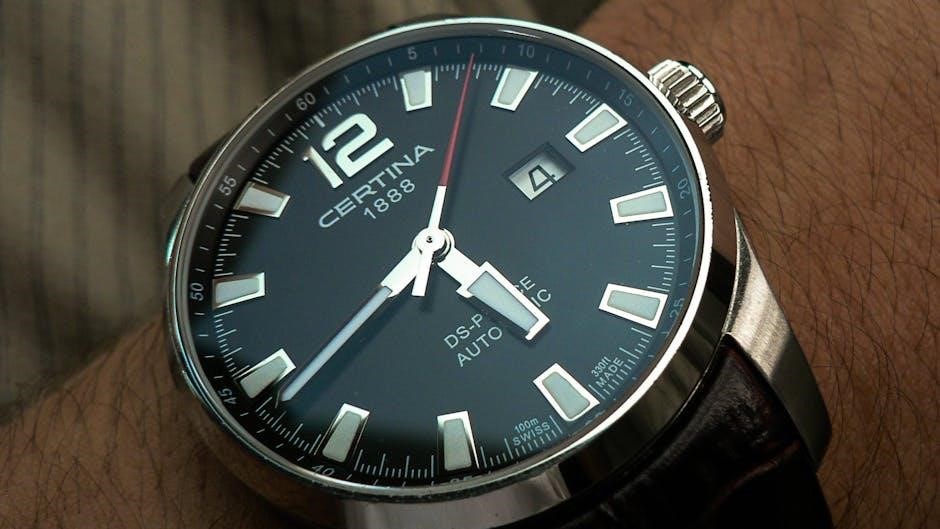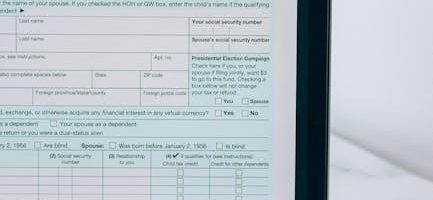This guide provides essential information for identifying and decoding Case backhoe serial numbers, helping users determine the year of manufacture, model specifics, and maintenance requirements. By understanding these unique identifiers, operators can ensure proper equipment maintenance, parts compatibility, and optimal performance. This comprehensive resource covers various models, offering a clear approach to decoding serial numbers for accurate machine identification and operational efficiency.
1.1 Importance of Serial Numbers
Serial numbers are unique identifiers crucial for identifying and verifying Case backhoe equipment. They provide essential details about the machine’s year of manufacture, model, and production specifics. Understanding these numbers is vital for scheduling maintenance, ensuring parts compatibility, and validating warranty claims. Additionally, serial numbers help in verifying the authenticity of equipment, preventing counterfeiting, and ensuring compliance with manufacturer standards. Accurate identification through serial numbers is key to maintaining operational efficiency and extending the lifespan of the machinery. This guide emphasizes the significance of these identifiers and how they contribute to proper equipment management and upkeep.

Locating the Serial Number
Knowing where to find the serial number is crucial for accurate identification. Common locations include under the left door, on the frame rail, or under the left lift arm. Older models may have different placement, so checking specific areas carefully is essential. Always ensure the number is legible and correctly identified to avoid confusion with other plates, such as the ROPS plate inside the cab.
2.1 Common Locations
Locating the serial number on a Case backhoe is straightforward once you know where to look. Common locations include under the left door on the side of the frame rail or under the base of the left lift arm. For older models, such as the 580B, 580C, and 580D series, the serial number is often found on the left side of the dash, just inside the left door of the cab. It’s important to distinguish the serial number plate from the ROPS plate, which is located inside the cab. Always ensure the number is legible and correctly identified to avoid confusion. Checking these areas carefully will help you find the serial number quickly and accurately.
2.2 Model-Specific Locations
For certain Case backhoe models, the serial number location varies. The 580B, 580C, and 580D series typically have the serial number under the left door on the frame rail or under the base of the left lift arm. In contrast, the 580CK model often features the serial number on the right side of the main frame, near the rear axle. These model-specific locations ensure that the serial number is easily accessible for identification and maintenance purposes. Always refer to the appropriate model-specific guide to locate the serial number accurately, as the position may differ slightly between models. This ensures that you can quickly and reliably find the information needed for decoding and verification.

Decoding Serial Numbers
Decoding Case backhoe serial numbers reveals the year. Older models use 7-8 digits; 2004 onwards use 9-10 digits, with the second digit indicating the year.
3.1 Old Format (Pre-2004)
For Case backhoes manufactured before 2004, the serial number format typically consisted of 7-8 digits. These numbers were used to identify the machine and determine its production year. To decode the year, the first two digits of the serial number were subtracted by 4. For example, a serial number starting with “42” would indicate a production year of 1938. This method was consistent across many Case models, including tractors and backhoes, from 1938 through 1953. The serial number was usually located under the left door or on the frame rail, providing essential information for maintenance and parts compatibility. Understanding this format is crucial for accurately identifying older Case backhoes.
3.2 New Format (2004 Onwards)
Starting from 2004, Case backhoes adopted a new serial number format, typically featuring 9-10 digits. This format includes the year of manufacture as the second digit in the sequence. For example, in the serial number “N5C388221,” the “5” represents the year 2005. This system provides clearer identification and simplifies decoding for users. The serial number is usually located on the left side of the dash or under the base of the left lift arm. This format ensures consistency across models and helps in maintaining accurate records for maintenance and parts compatibility. Understanding this format is essential for identifying and servicing modern Case backhoes effectively.
3.3 Understanding VIN Numbers
A VIN (Vehicle Identification Number) is a 17-digit unique identifier for vehicles, including Case backhoes. It provides detailed information about the machine, such as manufacturer, model, production year, and assembly plant. The VIN is typically located on the left side of the dash or under the base of the left lift arm. For older models like the 580B, 580C, and 580D, the VIN plate is inside the cab on the left door or frame rail. The VIN helps in verifying ownership, ensuring parts compatibility, and maintaining accurate service records. It is crucial for identifying specific features and configurations of your Case backhoe, making it an essential tool for maintenance and operational planning.

Common Mistakes to Avoid
Common errors include misidentifying serial numbers and relying on incorrect sources. Ensure accurate decoding by cross-referencing with official guides to avoid misidentification and incorrect year determination.
4.1 Misidentification of Numbers
Misidentification of serial numbers is a common issue, often due to confusion between old and new formats or mixing up digits. Older models (pre-2004) have 7-8 digit serial numbers, while newer models (2004 onwards) use 9-10 digits, with the second digit indicating the year of manufacture. Additionally, the VIN number location can be mistaken, as it is often found on the left side of the dash or under the base of the left lift arm. Operators must avoid confusing the ROPS plate with the VIN plate. To prevent errors, always cross-reference the serial number with official guides or manufacturer resources to ensure accurate identification and avoid costly mistakes in maintenance or parts ordering.
4.2 Relying on Incorrect Sources
Relying on incorrect sources when decoding Case backhoe serial numbers can lead to misidentification of the year of manufacture, model, or production details. Many outdated charts or unofficial websites provide inaccurate information, especially for older models. For example, pre-2004 models with 7-8 digit serial numbers are often confused with newer 9-10 digit formats, where the second digit represents the year. Using unreliable sources can result in incorrect maintenance schedules or incompatible parts. Always consult official Case guides, manufacturer resources, or trusted PDF downloads to ensure accuracy. Cross-referencing with multiple sources is crucial to avoid errors and maintain equipment performance. Incorrect data can lead to costly mistakes, so verify information through reputable channels.

Using the Guide for Maintenance
This guide is essential for maintaining your Case backhoe, as it helps decode serial numbers to ensure accurate parts compatibility and optimal performance over time.
5.1 Importance for Maintenance
Understanding and utilizing the Case backhoe serial number is crucial for effective maintenance. It ensures accurate identification of the machine, allowing for the correct parts and services to be applied. By decoding the serial number, operators can access detailed manufacturing information, including the production year and model specifics. This data is essential for scheduling routine maintenance, ordering compatible parts, and ensuring compliance with manufacturer recommendations. Proper maintenance extends the equipment’s lifespan, enhances performance, and prevents costly repairs. Additionally, it helps in tracking the service history, ensuring safety standards are met, and optimizing operational efficiency. Regular maintenance, guided by the serial number, is vital for maximizing the productivity and reliability of the Case backhoe.
5.2 Ensuring Parts Compatibility
Accurate identification of the Case backhoe serial number is vital for ensuring parts compatibility. Each serial number contains specific details about the machine’s model, year, and manufacturing specifications. This information allows operators to order precise replacement parts, avoiding mismatches that could lead to mechanical issues or safety hazards. For instance, models like the 580B, 580C, and 580D have distinct components, and using the wrong parts can compromise performance. By referencing the serial number, users can cross-check with manufacturer catalogs or online resources to confirm compatibility. This ensures that repairs and upgrades are done correctly, maintaining the equipment’s reliability and extending its operational lifespan. Proper parts matching is essential for sustaining the Case backhoe’s efficiency and safety standards.
Evolution of Case Backhoes
The evolution of Case backhoes is marked by advancements in design, functionality, and technology. Serial number formats changed over the years, reflecting improvements in manufacturing and data management systems.
6.1 Historical Development
The historical development of Case backhoes is closely tied to advancements in agricultural and construction machinery. Early models, such as the Case 580 Series, introduced in the mid-20th century, laid the foundation for modern backhoes. These machines were designed for versatility, combining a tractor, front loader, and backhoe in one unit. Over the years, Case incorporated innovative technologies, improving hydraulic systems, engine efficiency, and operator comfort. The evolution of serial number systems reflects these advancements, with earlier models using shorter, 7-8 digit codes and later models adopting longer, 9-10 digit formats to include more detailed production information. This progression highlights Case’s commitment to precision and innovation in heavy machinery.
6.2 Changes in Serial Number Systems

Over the years, Case backhoe serial number systems have undergone significant changes to enhance accuracy and information encoding. Pre-1988 models used shorter, 7-8 digit serial numbers, while post-1988 models transitioned to 10-digit formats. In 2004, Case introduced a new system where the second digit represented the year of manufacture, simplifying identification. By 2014, serial numbers expanded to 17 digits, aligning with global standards and incorporating detailed production data. These changes reflect advancements in manufacturing and the need for clearer traceability. The evolution of serial number systems ensures better organization and easier identification of Case backhoe models, aiding in maintenance, parts compatibility, and historical tracking.

Troubleshooting

Common issues include missing or illegible serial numbers and cross-referencing with other data. Use manufacturer guides or online resources to verify and decode accurately for proper identification.
7.1 Dealing with Missing or Illegible Numbers
If the serial number is missing or illegible, consult the manufacturer’s resources or authorized dealers for assistance. Cross-referencing with other machine identifiers, such as engine or component numbers, can help determine the year and model. Additionally, using online guides or PDF documents specific to Case backhoes can provide alternative methods for decoding and identifying the equipment. Ensure all information is verified through multiple sources to maintain accuracy and avoid errors in identification and maintenance planning.
7.2 Cross-Referencing with Other Information
Cross-referencing with other information is crucial when dealing with unclear or incomplete serial numbers. By examining the VIN number, engine serial number, or model-specific codes, you can gather additional details about the backhoe. This method ensures accuracy and helps verify the machine’s identity. Utilize manufacturer-provided resources, such as PDF guides or official documentation, to align the serial number with production data; Additionally, consulting with authorized dealers or experts can provide further clarification. This approach minimizes errors and ensures that the information aligns with the equipment’s specifications, aiding in proper maintenance and performance optimization. Consistency across all identifiers is key to avoiding misidentification and ensuring reliable results.
Understanding Case backhoe serial numbers is vital for accurate identification, proper maintenance, and optimal performance. This guide provides a clear method to decode and utilize these numbers effectively for ensuring parts compatibility and equipment longevity.
8.1 Summary of Key Points
This guide provides a detailed approach to understanding Case backhoe serial numbers, emphasizing their importance for identifying the year of manufacture, model specifics, and maintenance needs. It highlights the evolution of serial number formats, from older 7-8 digit systems to modern 9-10 digit codes, with the second digit often indicating the production year; Key locations for finding these numbers, such as the left side of the dash or under the base of the left lift arm, are also covered. The guide stresses the importance of accurate decoding to avoid misidentification and ensure parts compatibility. By following this resource, users can optimize equipment performance, maintain operational efficiency, and extend the lifespan of their machinery.

Resources
Access comprehensive PDF guides and manufacturer support for detailed Case backhoe serial number charts and model-specific information to enhance your understanding and maintenance efforts.
9.1 PDF Guides and Downloads
Downloadable PDF guides provide detailed charts and explanations for decoding Case backhoe serial numbers. These resources, available from manufacturer websites and trusted sources like ConEquip, offer comprehensive breakdowns of serial number formats, including old and new styles. For instance, older models (pre-2004) feature 7-8 digit serial numbers, while newer models (2004 onwards) use 9-10 digits, with the second digit indicating the year of manufacture. These guides also include model-specific information, such as the Case 580 Series, helping users identify production years and ensure parts compatibility. By referencing these PDFs, users can accurately decode their equipment’s serial number, ensuring proper maintenance and operational efficiency.
9.2 Manufacturer Support and Contact
For accurate and official information, contacting Case manufacturer support is highly recommended. Their dedicated team provides detailed guidance on decoding serial numbers and determining the year of manufacture. Users can reach out through the official Case website, where specific contact forms, phone numbers, and email addresses are available. Additionally, authorized dealers and service centers offer expert assistance, ensuring reliable and precise information. Manufacturer support is crucial for resolving complex queries and accessing authentic documentation, making it an invaluable resource for maintaining and servicing Case backhoes effectively.

